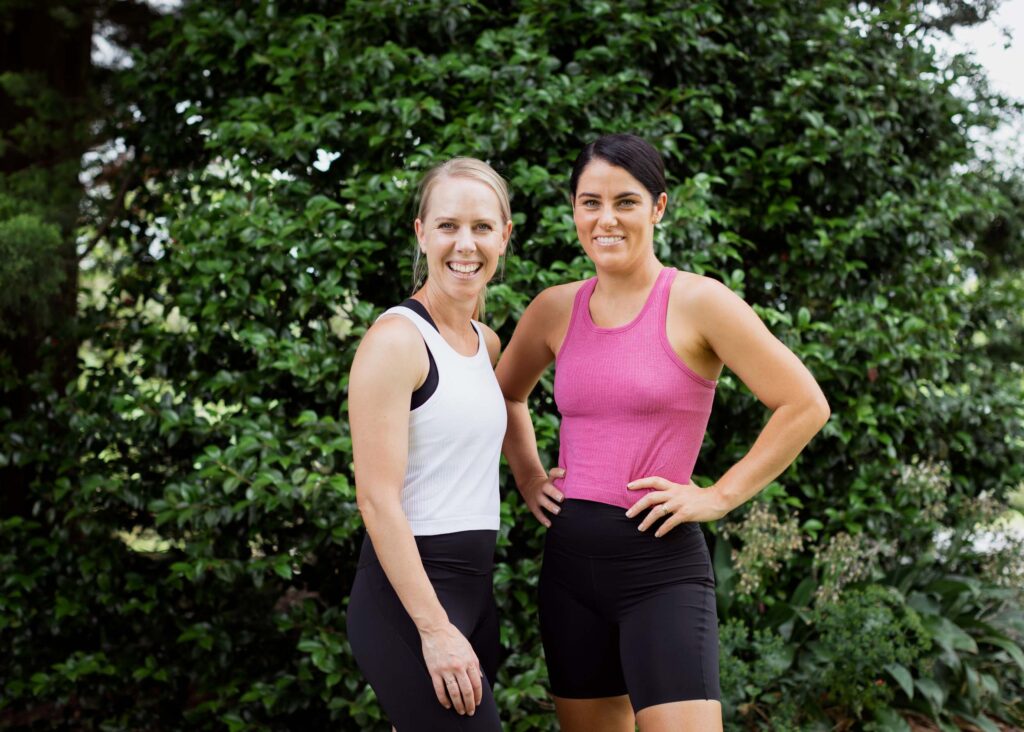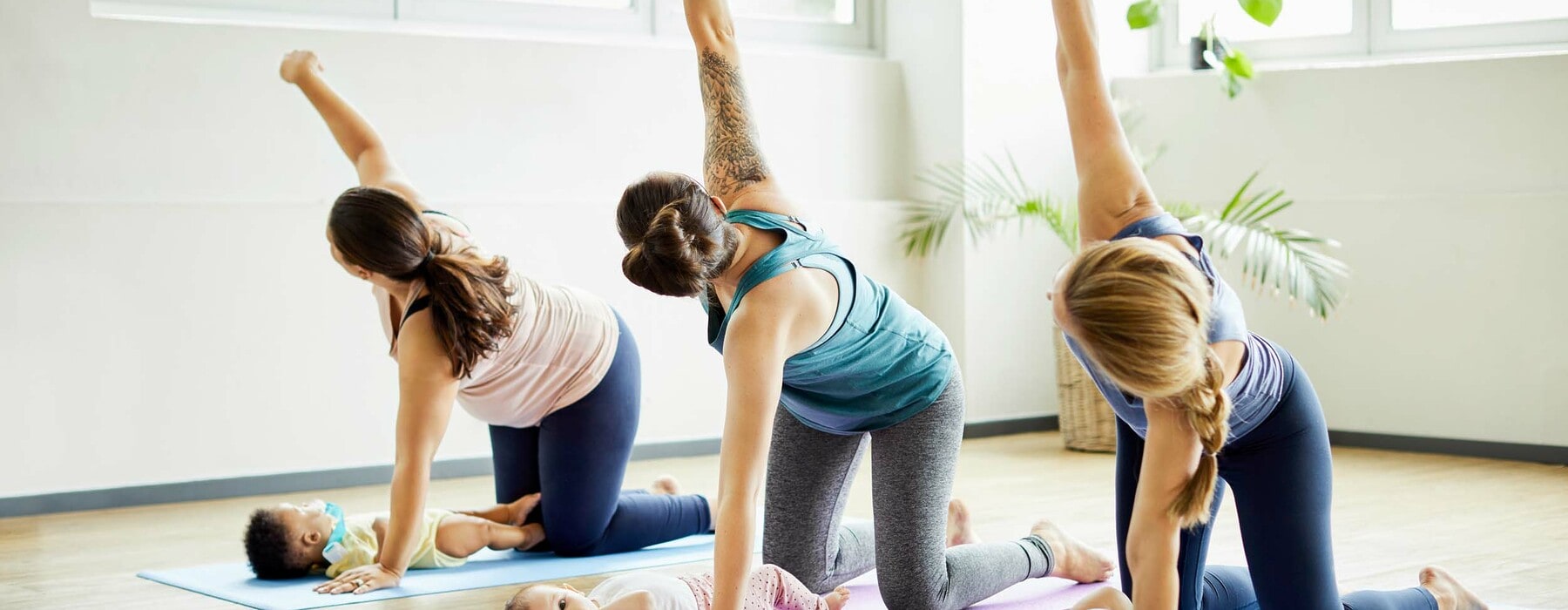Exercise is medicine for both mind and body when you’ve had a baby, so Sharon Stephenson finds out how to gradually and safely ease back into your favourite form of fitness.
It’s been called “snap-back culture” – the pressure for mothers to return to their pre-pregnancy weight and state as quickly as possible. Because if Victoria Beckham and Gwyneth Paltrow can do it then so can you, right?
Wrong, says Renee Norman. The co-founder of She Moves Fitness Collective, an online exercise programme specialising in pregnancy and postnatal exercise, believes that reaching for quick fixes to drop the baby weight is the surest route to injury and disappointment.
“Our message isn’t about trying to get your pre-baby body back as quickly as possible,” says Renee, a qualified personal trainer who started the business with friend and fellow trainer Jenna Smith in 2020.
“We’re saying the focus should be on how the exercise makes you feel when you’re ready to get back to it. Are you enjoying it and will you return to it? Weight loss is simply a by-product of exercising correctly and consistently and eating right.”
Morrinsville-based fitness professionals Renee and Jenna met though their husbands and bonded after they each had their first child. “We said to each other, we have no idea how or when to get back into exercise,” Renee recalls. “And if we feel like that, and we work in this space, then how must other mothers feel?”

Renee Norman (right, with her She Moves business partner Jenna Smith), turned to exercise as a refuge when faced with a colicky baby and a battle with postnatal anxiety. She’s a qualified health coach and personal trainer.
That was in 2016, not long after the launch of the pair’s online exercise company Real Health NZ. They realised they wanted to do better for their female clients. “We threw ourselves into researching pre- and postnatal personal training and completed papers online, fitting study around our newborns,” says Renee, who represented New Zealand at waterskiing as a teenager.
In 2020, the friends realigned their business offering to focus on exercise during and after pregnancy. That includes when to start and what to do and why. “Exercise is often the first thing to be crossed off the list when there’s a new baby and you’re sleep-deprived. But even 20 minutes of exercise has been shown to improve mood and postnatal depression, so self-care through exercise is important.”
Safety First
She’s right – a study from Spanish University Castilla La Mancha found that physical activity during and after pregnancy improves psychological wellbeing and may protect against post-partum depression, which it’s estimated can affect one in nine women. According to a recommendation from the American College of Obstetricians and Gynecologists, pregnant and post-partum women should engage in 20 to 30 minutes of moderate physical activity most days of the week. “Evidence shows that exercise in the post-partum period reduces fatigue, increases energy, improves mood and fitness and decreases the risk of developing future chronic conditions. Plus, it provides an important time out for the mother.”
One issue is that half of all postnatal women can suffer from prolapse, a weakness of the supporting structures of the vagina that allows the pelvic organs to press against the vaginal wall, producing a bulge.
“Symptoms of a prolapse could include one or more of the following: a feeling of heaviness, dragging or bulging in the vagina, feeling like you’re sitting on a tennis ball, struggling to orgasm, painful sex, and incontinence,” says Renee.
It’s estimated that one in three women will experience pelvic floor dysfunction or incontinence, and there’s also a high risk of abdominal separation, which can occur when the growing uterus causes the two long, parallel muscles of the stomach to separate from each other. “Symptoms of abdominal separation may include ‘coning’ or doming of the tummy when sitting up, getting out of bed or doing certain exercises, as well as lower back pain.”
These are issues that may not be picked up by midwives, says Renee. “Unfortunately, many Kiwi midwives and GPs don’t discuss or check for an abdominal separation or prolapse, so often these things go under the radar until they cause major issues. A lot of the time they present themselves after a woman has rushed back into their pre-pregnancy exercise without knowledge of how to return safely.”
Don’t Rush In
It’s why Renee suggests a slow and steady return to exercise. “You need to be kind to yourself. You’ve just grown and delivered a human being, so listen to your body, and if it says you need to rest, then do that.
As I say to clients, if you just had knee surgery, you wouldn’t go running the next day. You have to take time and ease yourself back into exercise. It’s the same after having a baby – if you take on too much too soon you could injure yourself, and that’s going to take you longer to recover from.”
Exercises to be cautious about include burpees, planks, press-ups and sit-ups, which put pressure on the core and pelvic floor and may do more harm than good.
Renee generally recommends mothers don’t start exercising until they’ve had a six-week medical check-up. “If that’s okay, then we advise paying a visit to a pelvic health/women’s health physiotherapist
for a warrant of fitness to check that your pelvic floor and abdominals are okay.”
Although some women’s physios are publicly funded, Renee says the wait list is often long. “Last year a petition was presented to Parliament calling for better postnatal care and rehabilitation for women, including having costs covered for physio visits. But in the meantime, if you can’t get a visit publicly funded, you’ll have to go private. Generally, the cost is around $100 an appointment, but while some women only need to have one visit, others may need three or more visits, depending on the health issues they’re dealing with.”
When the time is right to start working out, the focus should be on exercises that rebuild you from the inside out. “That means learning to reconnect with your core, engaging your deep core, pelvic floor activation and learning to control your breathing. There’s no point in doing squats and lunges when you haven’t rebuilt the core abdominal walls.”
There’s also no one-size-fits-all when it comes to the duration and frequency of workouts. “Between 20 and 30 minutes is a realistic time frame because mums are busy and you can park the kids with an activity or snack for 20 minutes and get it done. And if you can work out three times a week that’s fantastic, but even once a week is awesome.”
The pair and the trainers they employ work with around 2500 women across Aotearoa, running 12 online classes a week, including three specifically focused on pregnancy and three on post-partum exercise. Participants can join a live workout or stream it on demand, and they’ve also hired a nutritionist to expand their offerings.
“We’ve found there’s a real lack of personal trainers trained in pre- and post-partum exercise because in New Zealand there are no formal qualifications required to set up as an exercise professional. And many have no idea about postnatal exercise.”
The friends are clearly doing something right.
In December, She Moves Fitness Collective received two accolades in the 2021 New Zealand Exercise Industry Awards. For Renee, it was a recognition of how important it is to understand what women need and to be qualified enough to deliver it.
“We’re still learning and finding ways to help our mothers understand the power of movement to improve physical wellness and mental health, and to keep delivering those benefits throughout their lives.”
Small Steps Back Into Fitness
- Start with short walks around the block and slowly increase your distance.
- Gentle stretching and mobility exercise are good.
- Move into low-impact bodyweight exercises such as hip bridges, side planks, dead bugs and squats.
- Use an incline for burpees, planks and press-ups as you build back strength. l Slowly increase the intensity and impact if you’re able to maintain abdominal control.
- If returning to running, start off by jogging for two minutes, walking for two minutes. After a few days, if you’re feeling ready, increase that to three minutes. Slowly increase the running period over time.
- Always listen to your body. If you feel any heaviness, dragging or pain in your pelvis, or you experience leaking, then stop.
RELATED ARTICLE: Gemma McCaw gets candid about motherhood, family and maternal mental health







